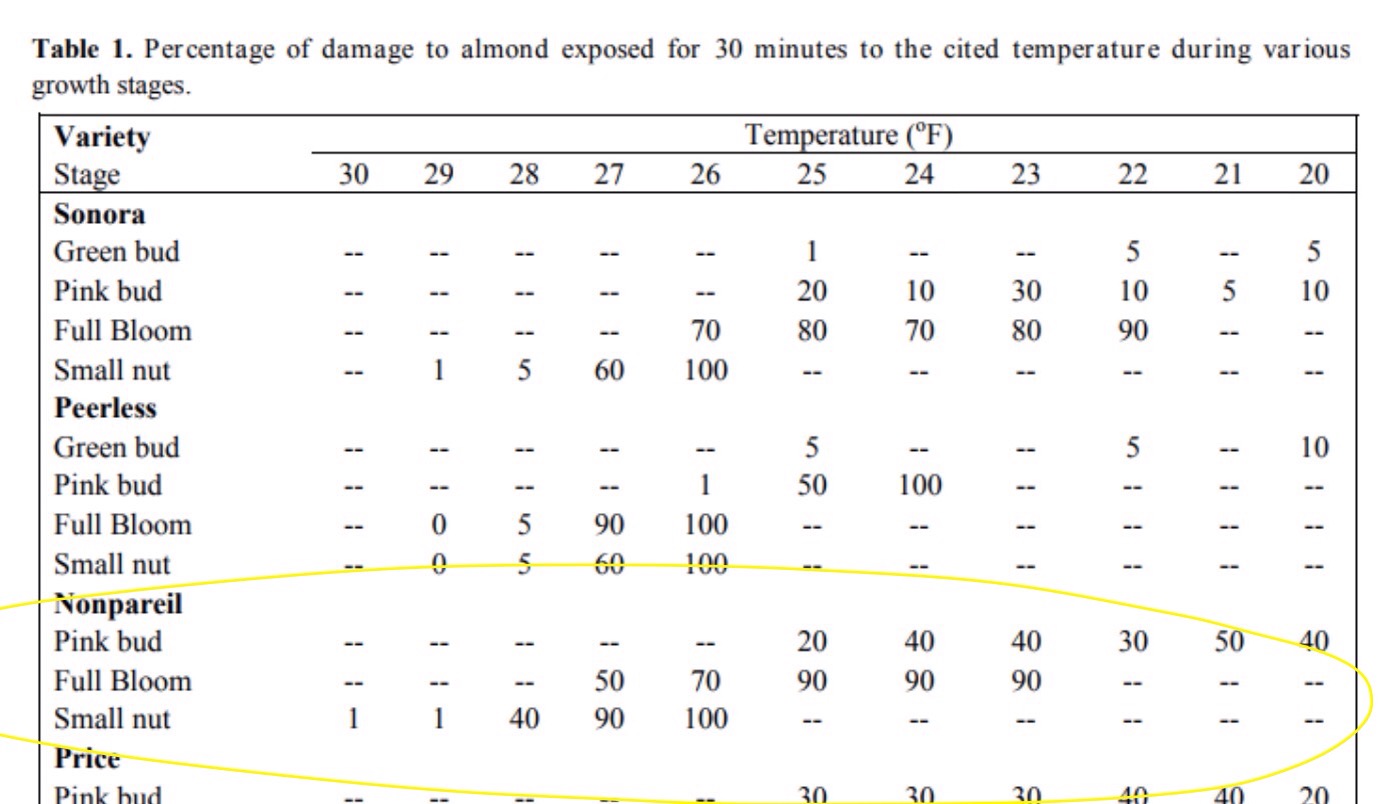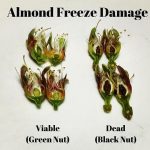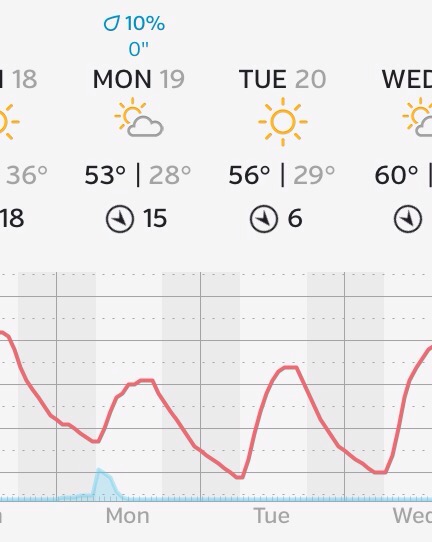It’s hard to believe but here we are back to the beginning; wash rinse repeat, it’s springtime bloom already. The growing cycle renews. Winter sanitation was completed, and soil moisture adjusted (rainfall was rather weak this go round). The season is off to a start with the early arrival of warm daytime temperatures. This brings on the flowers for pollination and luckily the bee hives have been on site for the last two weeks to take full advantage of the warm afternoons.
Nights can still be cold at this juncture and our Monday and Tuesday forecast frost/freeze is a potential pitfall:
Advection frosts can be severe and usually result in more damage. They occur with wind present as cold air comes from areas outside the orchard. Not happening.
Next weeks scenario is for mild, radiation frost that occurs on still, clear nights, often with the development of a strong inversion.
At pink bud, flowers are more resistant to cold compared to full bloom, which is more resistant than at petal fall or with small nuts. The following table is a guideline.

We are not completely at the mercy of Mother Nature:
Groundcover condition affects orchard minimums with any cover taller than 4 inches in height generally being colder. Soil heat storage is reduced because sunlight is reflected and water is evaporated. Keeping groundcovers cut short to 2 inches or less during frost season allows sunlight to reach the soil surface, and increases soil heat storage resulting in a warmer orchard through the night. Bare soil with soil moisture near field [moisture] capacity (about 2 days after wetting) is warmest because it transfers and stores heat best. A light irrigation to moisten dry soil a day or two before a frost will help obtain the greatest heat . Running the system during a frost may provide slight benefits due to radiation heating from the wetted area beneath the trees.  Flood irrigation for frost protection works in a similar fashion but due to larger water volumes it will provide more protection as long as ice doesn’t form on the water’s surface. In our experiments with micro-sprinklers, applying 15, 25, and 40 gallons per minute per acre resulted in little difference in observed air temperatures. However, exposed temperatures were 1 to 2 degrees warmer at the higher water rates. Exposed temperature is what the buds themselves experience. — via UCCE farm advisor and UC Davis biometeorologist http://bluediamondgrowers.com/grower-news/frost-protection/
Flood irrigation for frost protection works in a similar fashion but due to larger water volumes it will provide more protection as long as ice doesn’t form on the water’s surface. In our experiments with micro-sprinklers, applying 15, 25, and 40 gallons per minute per acre resulted in little difference in observed air temperatures. However, exposed temperatures were 1 to 2 degrees warmer at the higher water rates. Exposed temperature is what the buds themselves experience. — via UCCE farm advisor and UC Davis biometeorologist http://bluediamondgrowers.com/grower-news/frost-protection/
Our current status is firm, moist earth with no ground cover. We are presently between pink bud and full bloom. A technical malfunction with the drip irrigation system means that a precautionary irrigation will not be possible.
Fortunately, as the chart presentation depicts, we will be alright; it is the early nut stage that is most at risk.
